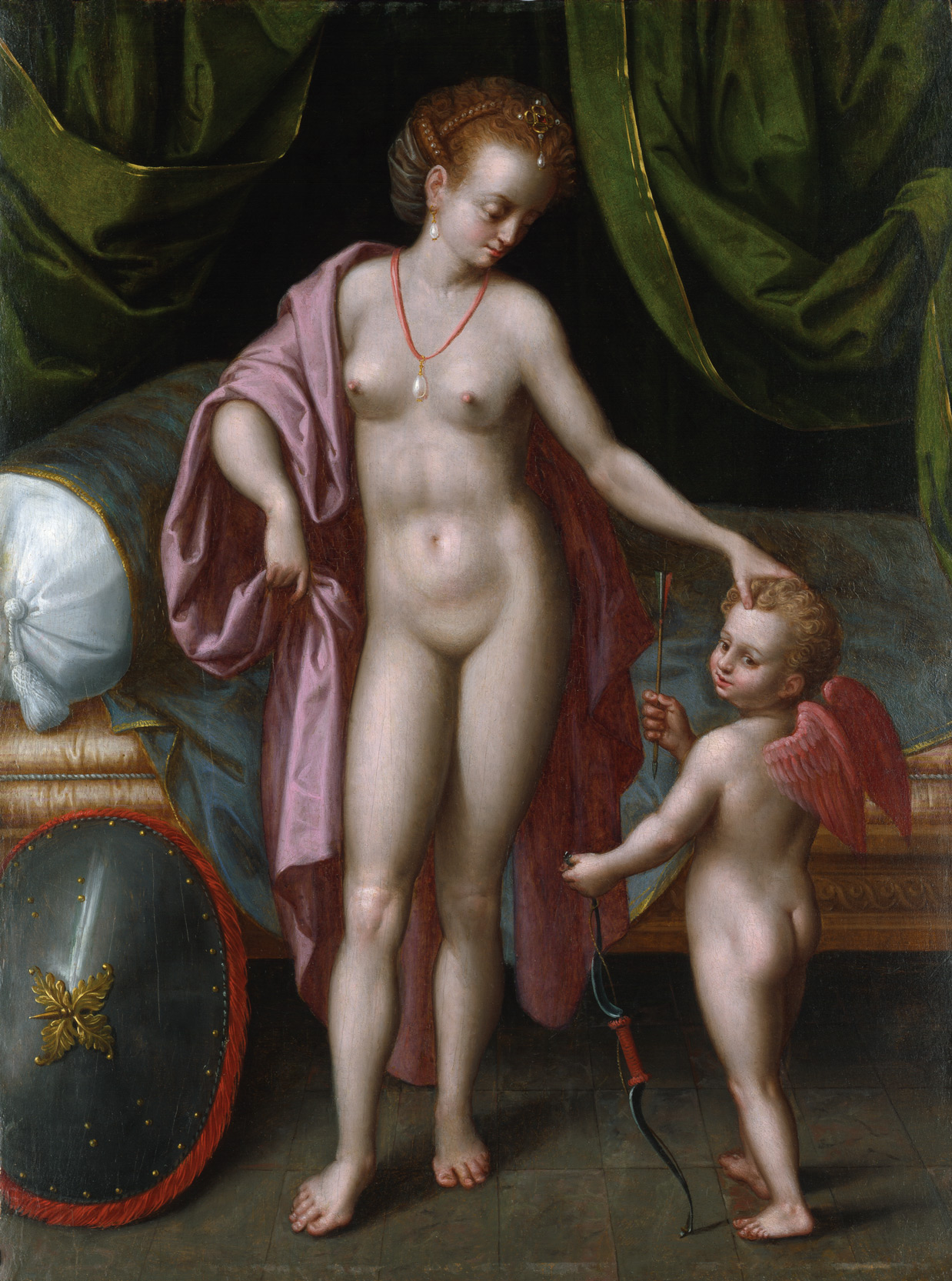Loading the page ...
Alexander Wiskemann
(active in Fulda, Prague and Kassel 1604–1622)
Attributed. Venus and Amor. Oil on panel. 47 x 36 cm. Old inventory number on the verso: F.C. 117.
Around 1600, at a crucial moment in European cultural and intellectual history, Emperor Rudolph II brought together a circle of scholars, artists and literaryfigures at his court in Prague, much in the way that the Medici had done in Florence over a century earlier. Artists of European stature in their field, such as the sculptor Adriaen de Vries and the painters Bartholomäus Spranger and Hans van Aachen, developed in Prague an unmistakable, highly refined late Mannerist style, the distinctive feature of which was a predilection for mythological and erotic themes. The magnetic attraction of their works was of tremendous significance. Artists from Germany, Flanders and the Netherlands came to train in their studios and thus contributed decisively to the dissemination of the Prague style, as it was called. Saxony and Hesse were the main regions in Germany from which talented young painters travelled to Prague to familiarise themselves with the new style and take it back with them to their home country. Training at the hands of the Emperor Rudolph’s master artists gradually came to replace the obligatory tour of Italy.
Alexander Wiskemann, a painter and draughtsman from Fulda, was among those who reached artistic maturity in this way. His rare autograph works reveal the extent of the stylistic influence exerted by the leading masters of the Prague school – Hans von Aachen and, in particular, Bartholomäus Spranger. Wiskemann’s drawing of Perseus, signed and dated 1609 (Bremen, Kunsthalle), springs directly from works by Spranger. The same observation applies for the drawing Minerva among the Muses (Düsseldorf, Kunstmuseum), which is a slightly modified version of an original by Spranger (see catalogue Prag um 1600. Kunst und Kultur am Hofe Kaiser Rudolfs II, Vienna 1988, vol. I, no. 258, p. 387–88). Wiskemann also executed a painted version of the same composition, now in the Strahov Premonstratensian monastery in Prague, which has close stylistic parallels with our Venus and Amor. Both works reveal a distinctly comparable handling of the figures and a similarly subtle and sensitive treatment of the material. Venus’ physiognomy with her high, smooth forehead and ornately plaited hair decorated with an exquisite pearl diadem is to be found in analogous form in the painting in Prague. The painter has shown great artistic sensitivity in juxtaposing Venus’ cool complexion with the warmer shades of the precious fabrics. The cold metal of the shield forms a delightful contrast with the soft velvet cover of the goddess of love’s lounge bed and the heavy, gold-embroidered curtains. The subtle eroticism of the portrayal and the aesthetic refinement of this little picture make it a superb example of Rudolphine art. In 1615 at the latest Alexander Wiskemann returned from Prague to the Hessian town of Fulda, where he was appointed court painter to the prince-abbots there (see Eliška Fuciková, „Einige Bemerkungen zur rudolfinischen Sammlung in Prag“, in: Prague and the World, ed. Lubomir Konecny, Prague 1998, p. 182).
Provenance: Galerie Attems, Graz; in private ownership in Vienna since 1952.
The attribution to Alexander Wiskemann has been suggested by Dr. Eliška Fuciková, Prague.
Contact us for further information